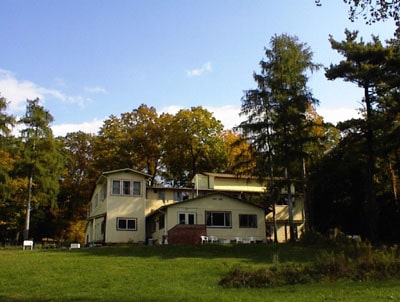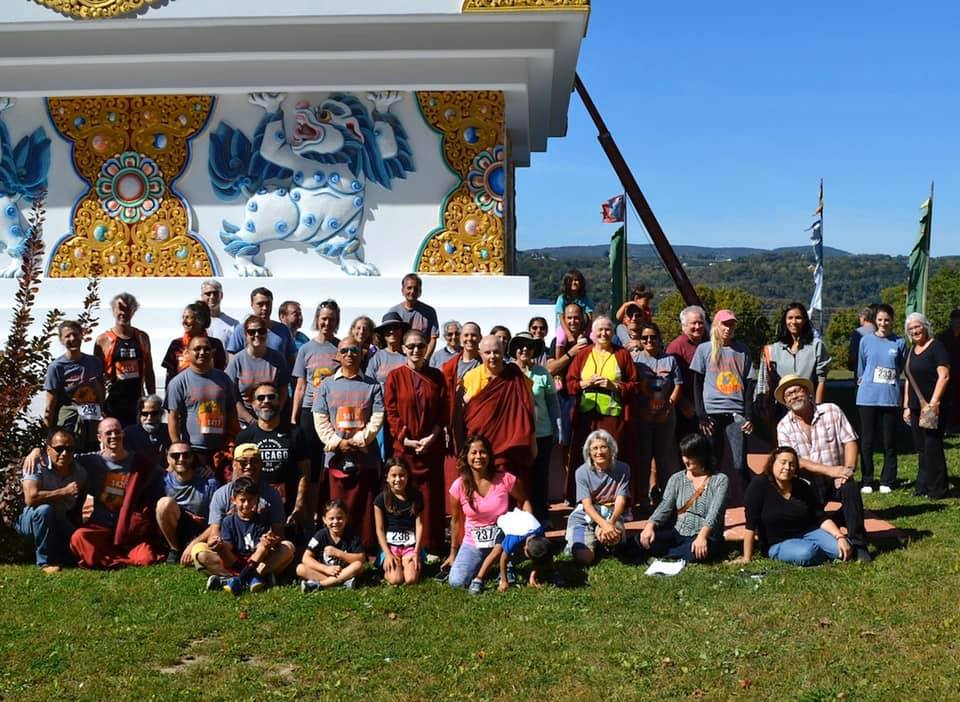About Us
Roots and Branches of Palpung Thubten Choling
The Early Days
Palpung Thubten Choling Monastery, whose name means “Garden of the Buddha’s Teachings,” was founded in 1978 by Lama Norlha Rinpoche under the guidance of his root guru Kyabje Dorje Chang Kalu Rinpoche. It was named after the main Palpung monastery in Tibet, the seat of Guru Vajradhara His Holiness The Twelfth Chamgon Kenting Tai Situpa, under whose spiritual direction Palpung Thubten Choling and its affiliated centers operate as branches of the Palpung Congregation.
Forty Years of Visiting Luminaries
Since 1980, we have been immensely fortunate to welcome a number of great lamas and spiritual heads of all traditions of Tibetan Buddhism, who have visited, blessed, and given teachings and empowerments at PTC. In addition to many visits from our spiritual director Guru Vajradhara His Holiness Chamgon Kenting Tai Situpa, PTC has also hosted His Holiness the Fourteenth Dalai Lama; both the 16th and 17th Gyalwang Karmapas; Kyabje Dorje Chang Kalu Rinpoche and his successor, the current Kalu Rinpoche; Jamgon Kongtrul Rinpoche III; Gyaltsap Rinpoche; Yongey Mingyur Rinpoche; Khenpo Tsultrim Gyamtso Rinpoche; Khenchen Thrangu Rinpoche; Dilgo Khyentse Rinpoche; Sakya Trizin Rinpoche, and Ringu Tulku Rinpoche.
Lamas in Residence
Our founding abbot, Lama Norlha Rinpoche, passed away in 2018 after a long illness. Our current resident lamas, from Sherabling Monastery in India, are Lama Tsering, who serves as three-year retreat master, and Lama Norgyal, who was one of the principal chant leaders at Sherabling and is now the resident lama of Palpung Thubten Choling. A number of resident monastics and lay practitioners, including several three-year retreat graduates, lead programs and see to the day to day running of the monastery.
Buildings

From its beginning as a one-story factory building in the 1970s, PTC has grown continuously into the fully functioning Tibetan Buddhist monastery it is today. The first physical expansions, in the late 1970s and early 1980s, were the construction of the two three-year retreat houses that are still in use 40 years later, and the addition of a second story to house the original shrine room. Later the original building was further expanded to include a spacious dining room and additional rooms at the front of the house, which are now the library and resident housing. The Enlightenment Stupa for World Peace was constructed in the 1990s, and our new main monastery building, the Maitreya Center, with its vast Maitreya Shrine Hall, was competed in 2016.
Customary Practices and Rituals
Palpung Thubten Choling maintains the traditional practices, rituals, and customs of the Kagyu Lineage. Daily practices, called tsokpas, with their accompanying rituals, are chanted in the shrine rooms and retreat houses in Tibetan. Monthly practices, such as Dorje Pagmo, Korlo Demchog, and the dharma protectors Gonpo Bernachen and Chadrupa are conducted on the appropriate days of the Tibetan lunar month, accompanied by music played on traditional Tibetan instruments – cymbals, drums, long horns, and reed horns. Twice a year residents and visitors perform the traditional dokpa practices to remove obstacles and invite auspicious conditions, including the three-day practice of Tara Yuldok, and Sherab Nyingpo, an elaborate, day-long version of the Heart Sutra. Several times a year, especially at Saka Dawa in the spring and Lhabap Duchen in the fall, residents and visitors participate in the nyungne fasting practice of Thousand-Armed Chenrezig, lasting from two to 16 days. And, of course, every year the festivities of the Tibetan New Year, Losar, are observed according to the Tibetan lunar calendar, with the date generally ranging from late January to early March.
Programs for the Public
PTC also serves as an active dharma community and meditation center with both local and worldwide reach, providing opportunities for students at all levels. For more than two decades our teaching staff has offered an Introduction to Buddhist Meditation on Monday evenings, and over the past decade many local students have participated in a Tuesday evening study group to discuss the foundational texts of Tibetan Buddhism. To date we’ve completed The Ornament of Precious Liberation (Path to Buddhahood), The Great Path of Awakening, and The 37 Practices of a Bodhisattva. Currently the group is studying Tai Situ Rinpoche’s Awakening the Sleeping Buddha. All these programs, as well as special teachings and chanting events, are offered to the public free of charge. During the pandemic they have continued via Zoom.

The Three-Year Retreat Program
The three-year, cloistered seminary retreat program to train serious students in the core teachings and practices of the Kagyu Lineage, has been a major focus of Palpung Thubten Choling since its founding in 1982. Nine cycles of retreat have been completed to date, with the tenth cycle expected to commence in spring 2022. Prospective retreatants will begin formally training for retreat at the monastery in December 2021.
Three-year retreat graduates offer instruction in meditation, traditional rituals, and Tibetan language at the monastery and its affiliated centers located throughout the Eastern United States. They also serve as mentors in the Dharma Path Program.
The Dharma Path Program
In 2006, PTC introduced a pioneering online curriculum, the Dharma Path Program, designed by Lama Norlha Rinpoche, with the assistance of retreat graduates, to provide a step-by-step introduction to the core Kagyu teachings and practices for serious students who don’t have the circumstances to undertake a full three-year retreat. It now consists of seven levels, beginning with training in basic meditation techniques (level 1), followed by the traditional Tibetan ngondro, or preliminary practices (levels 2-5), which serve as preparation for the advanced sadhana practices of levels 6 and 7. Each Dharma Path student is assigned a mentor who has completed the three-year retreat to help guide them throughout the program.

